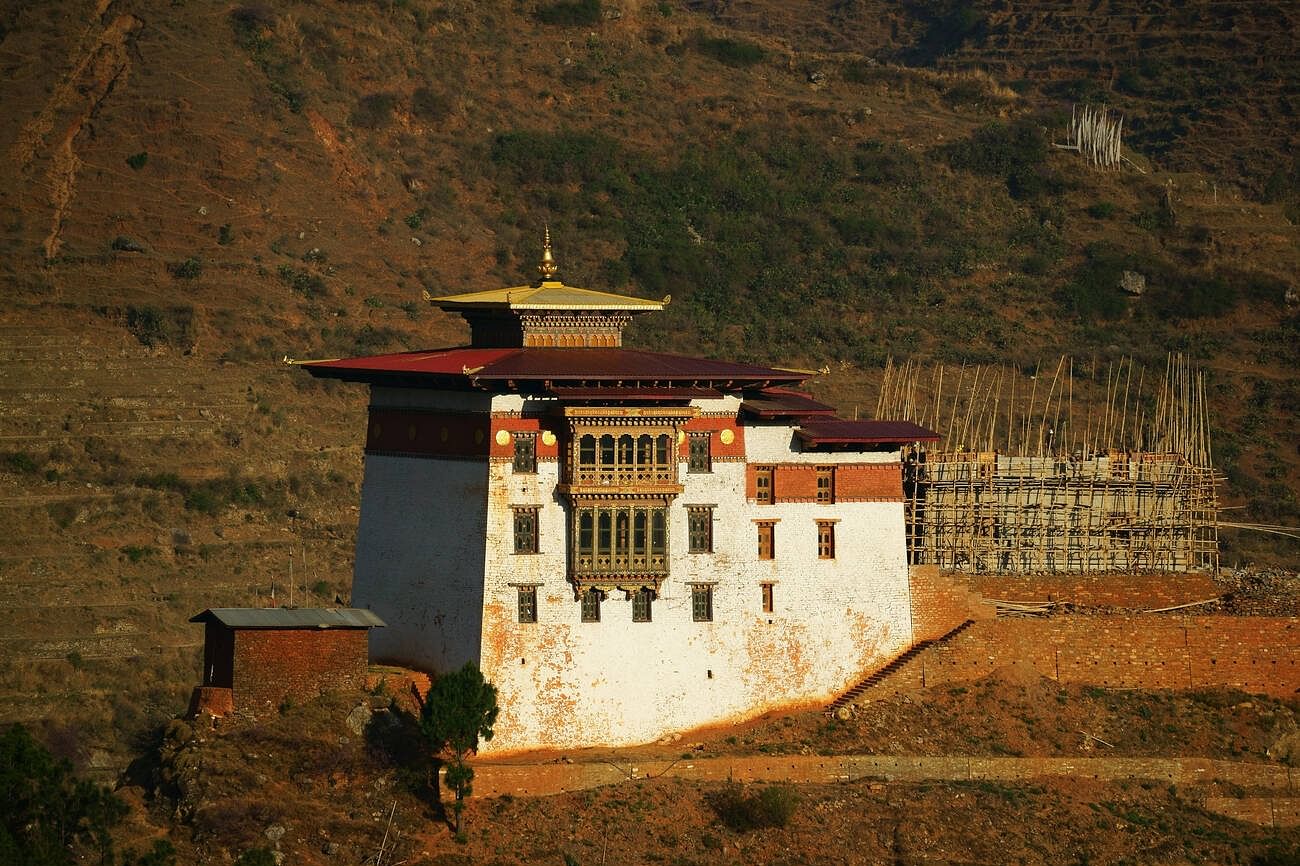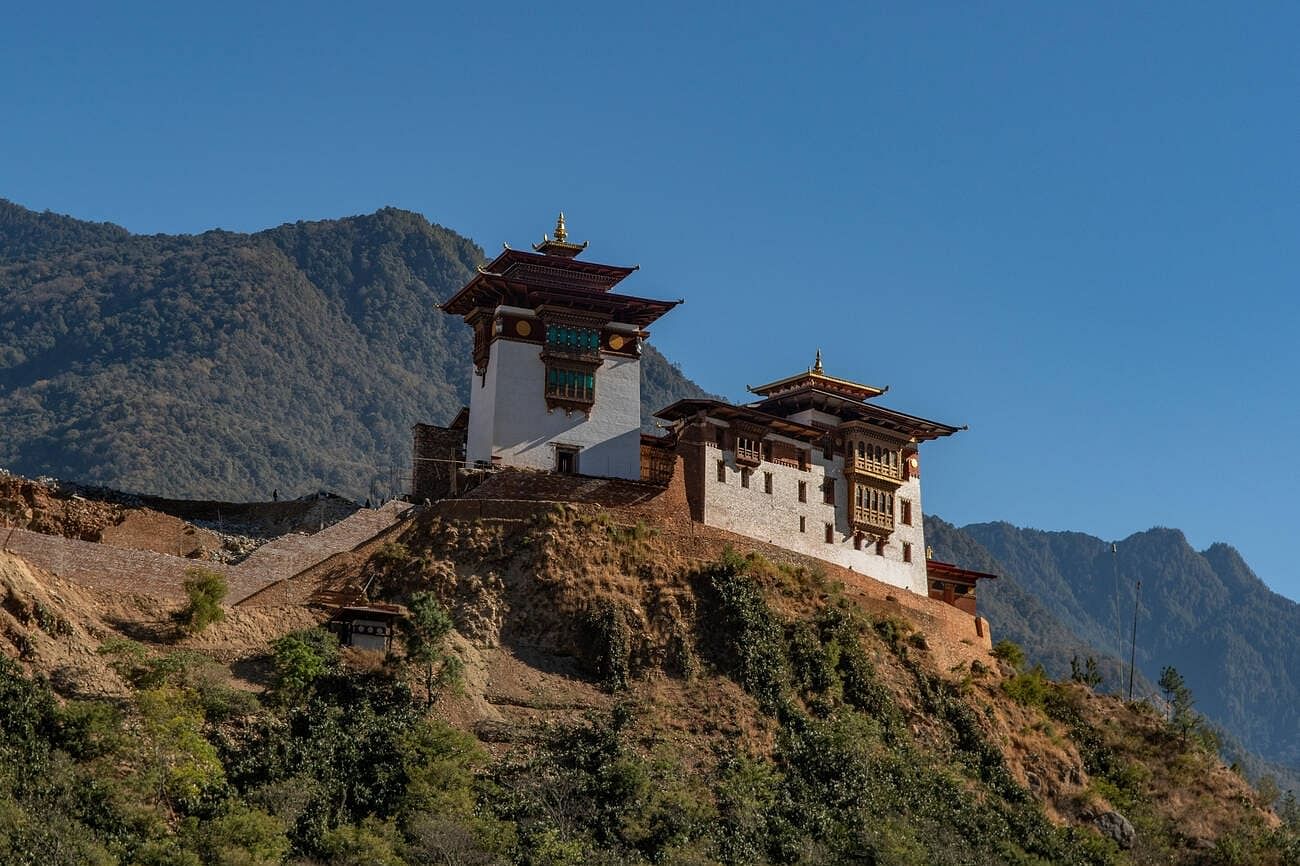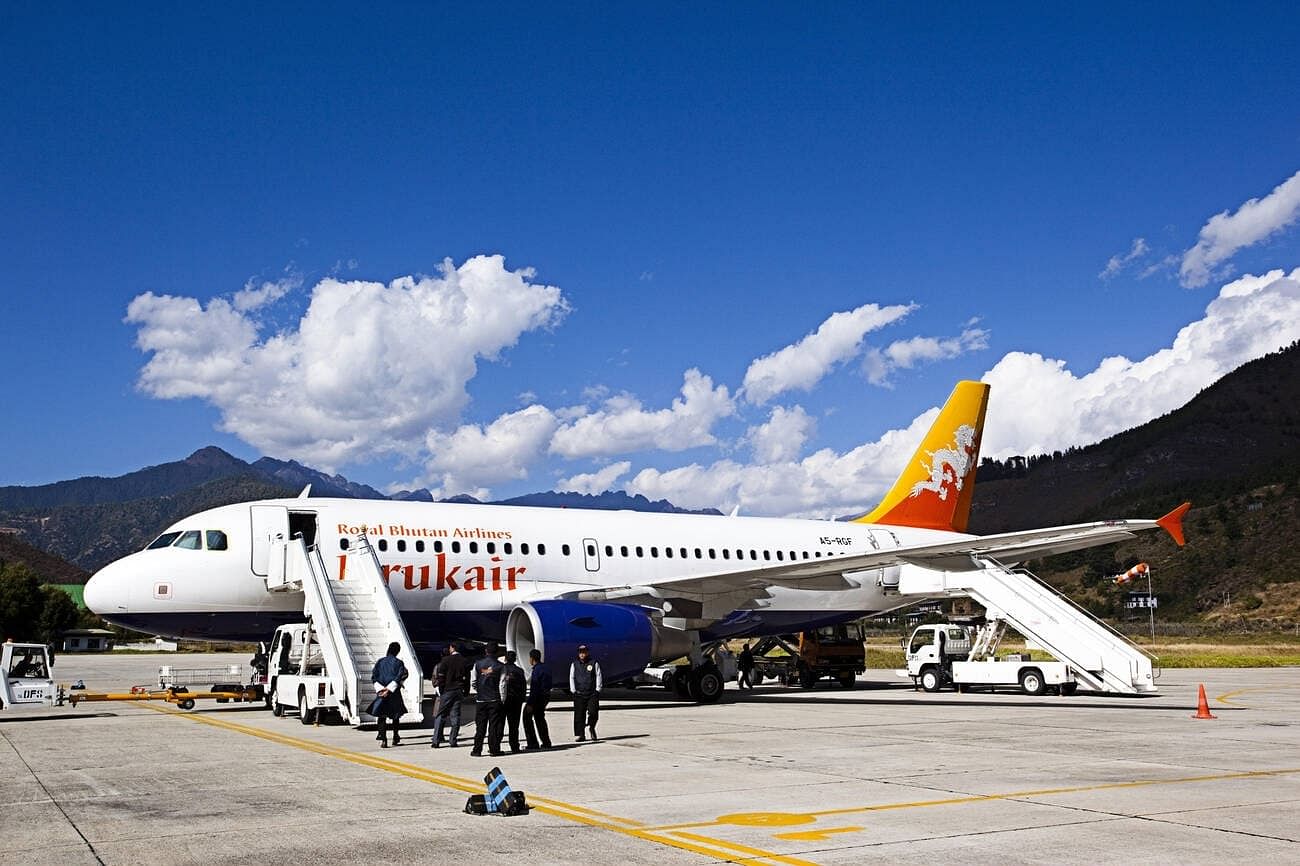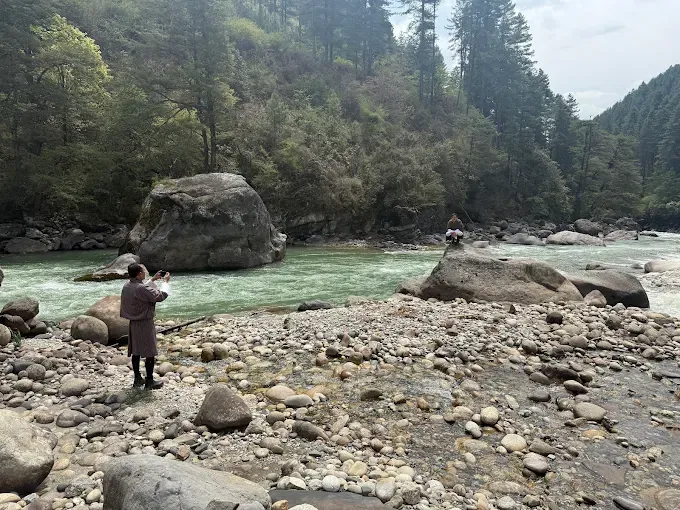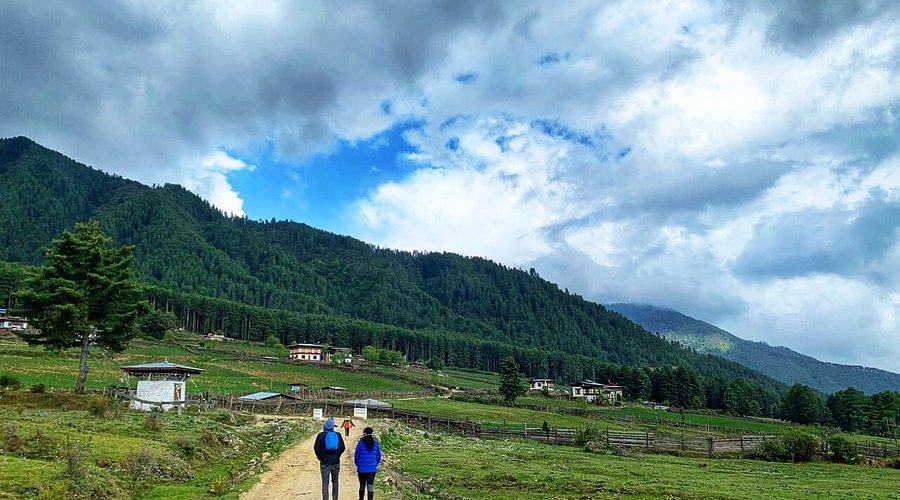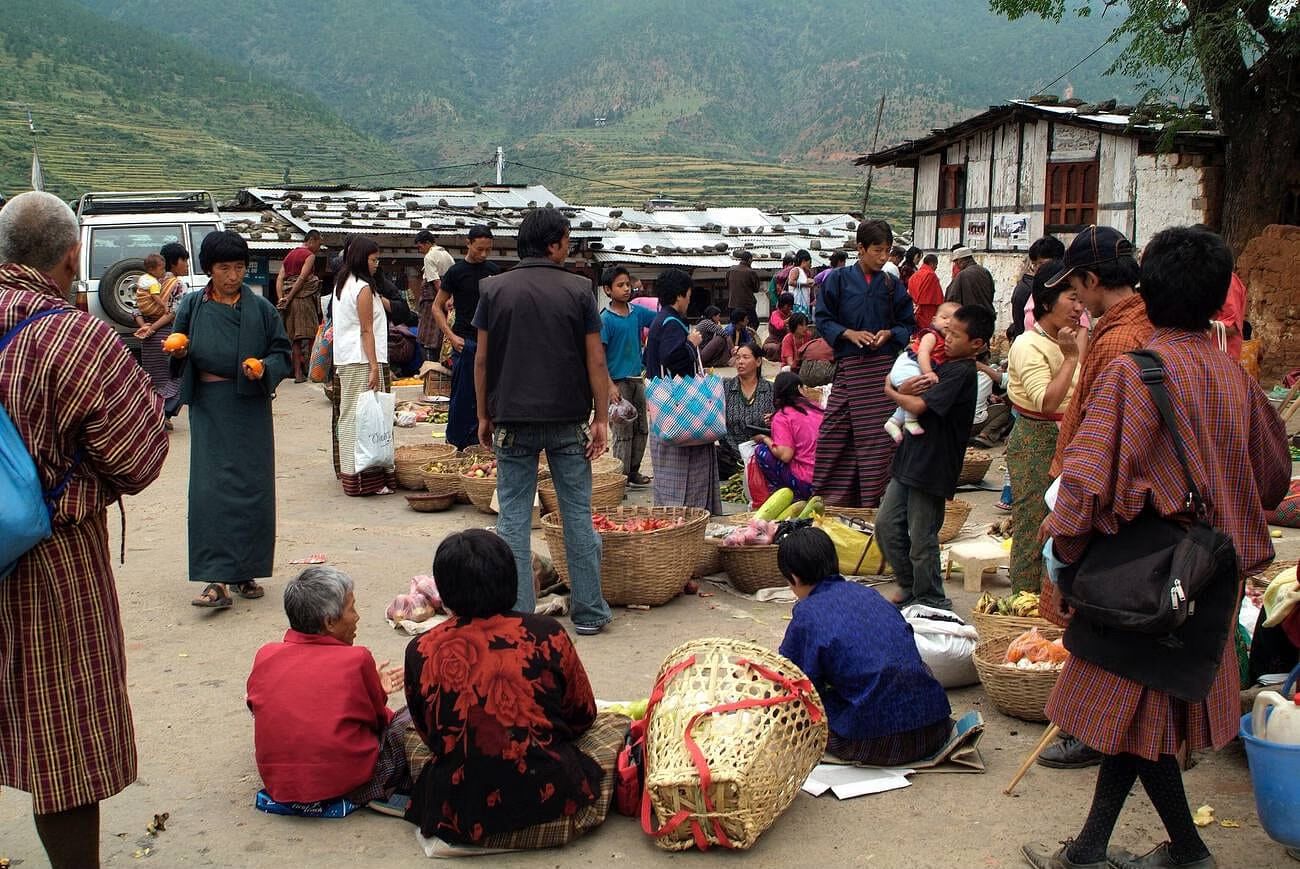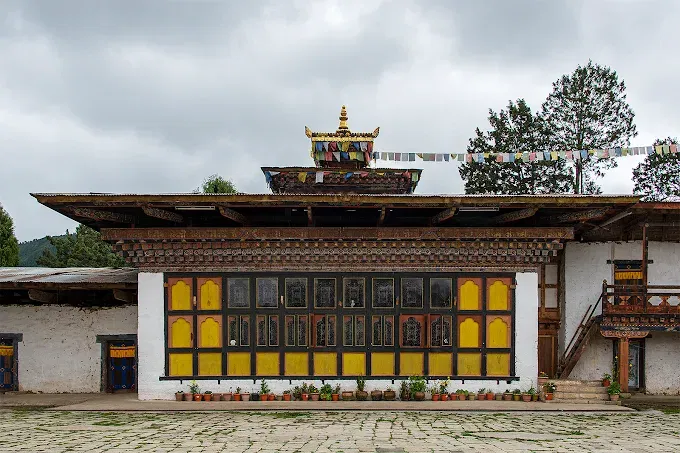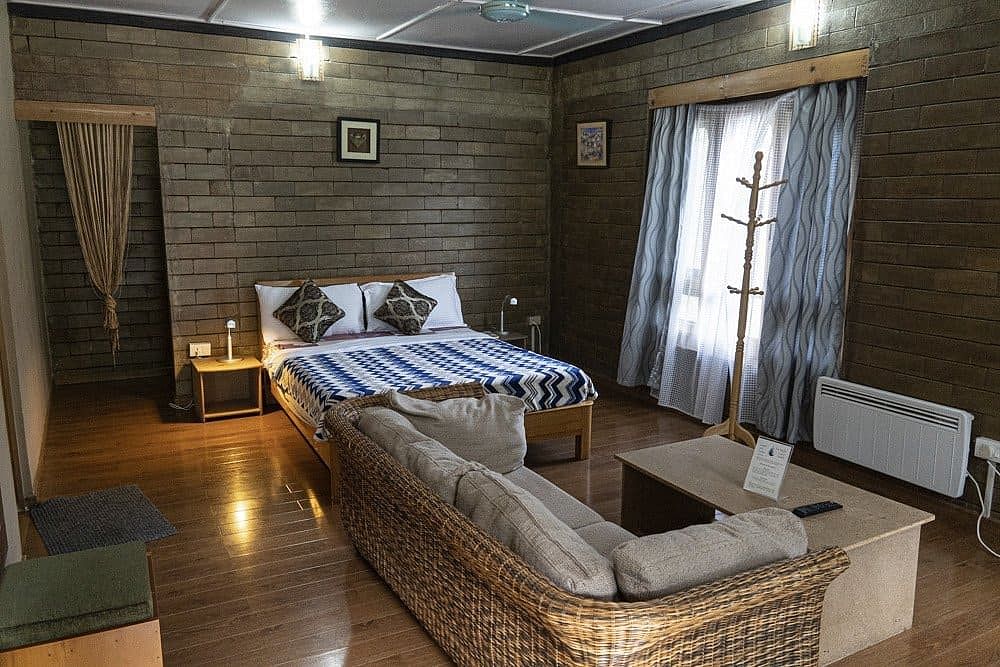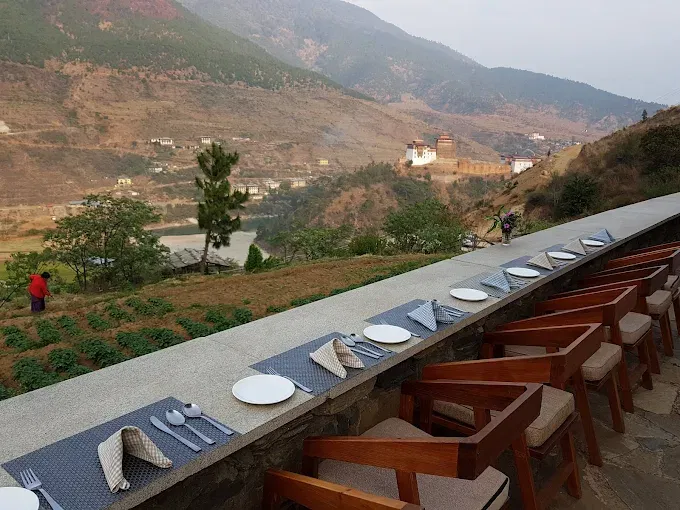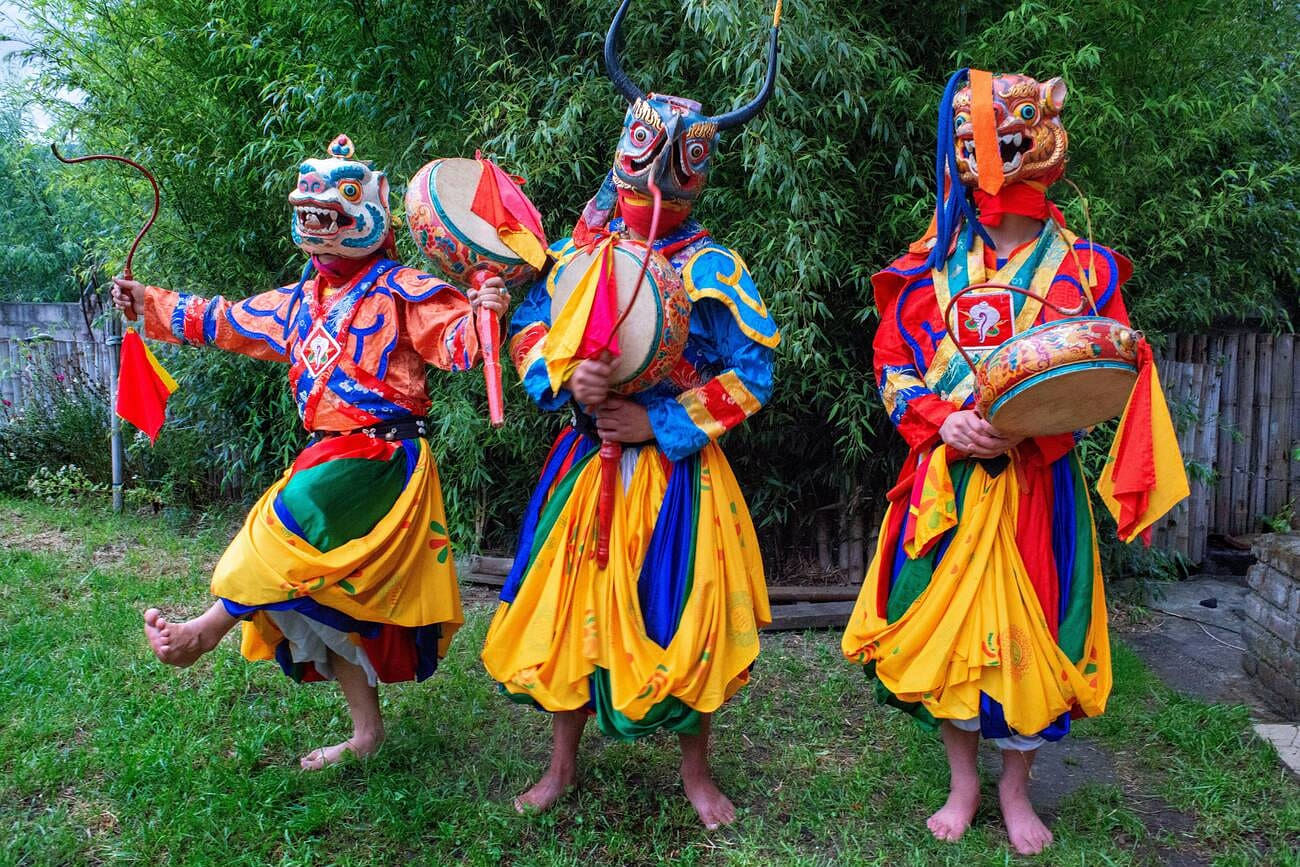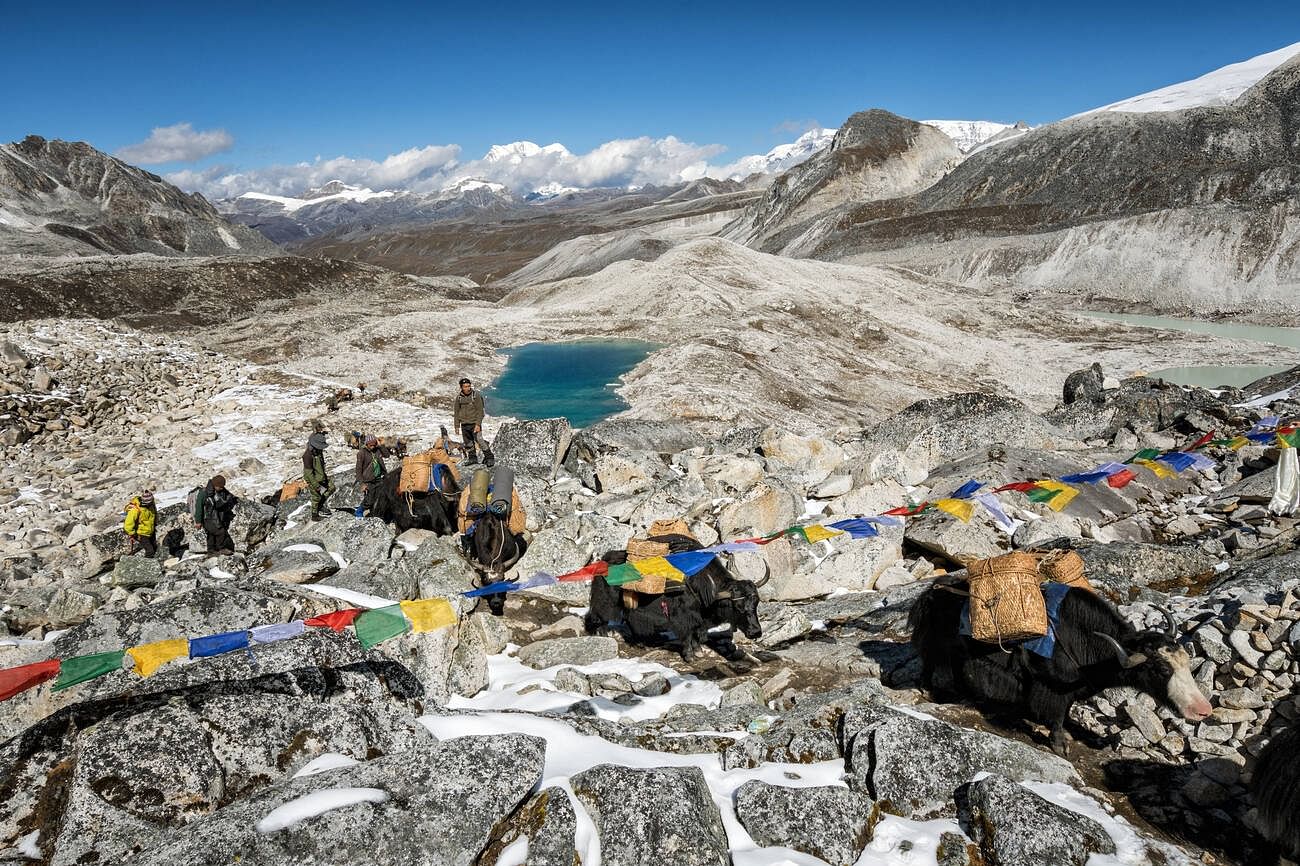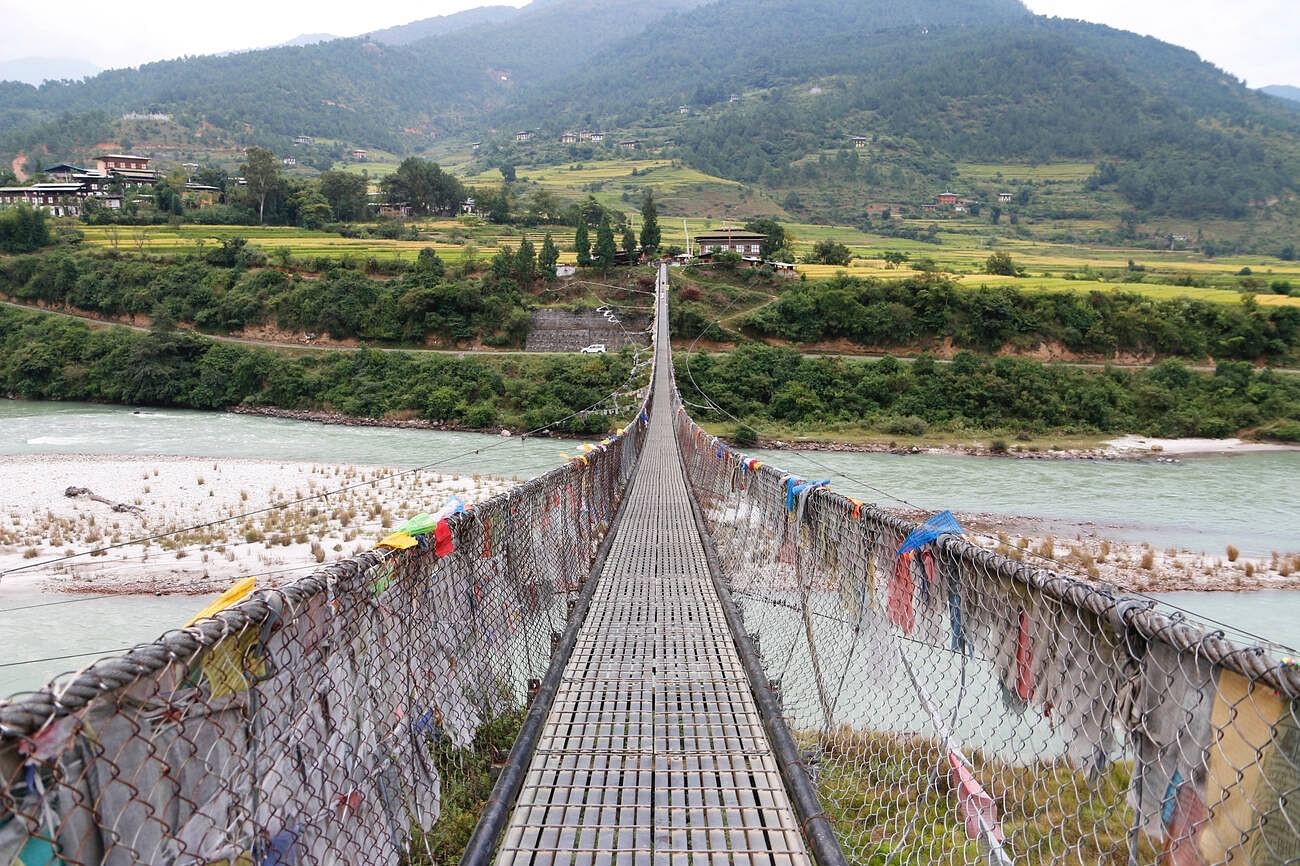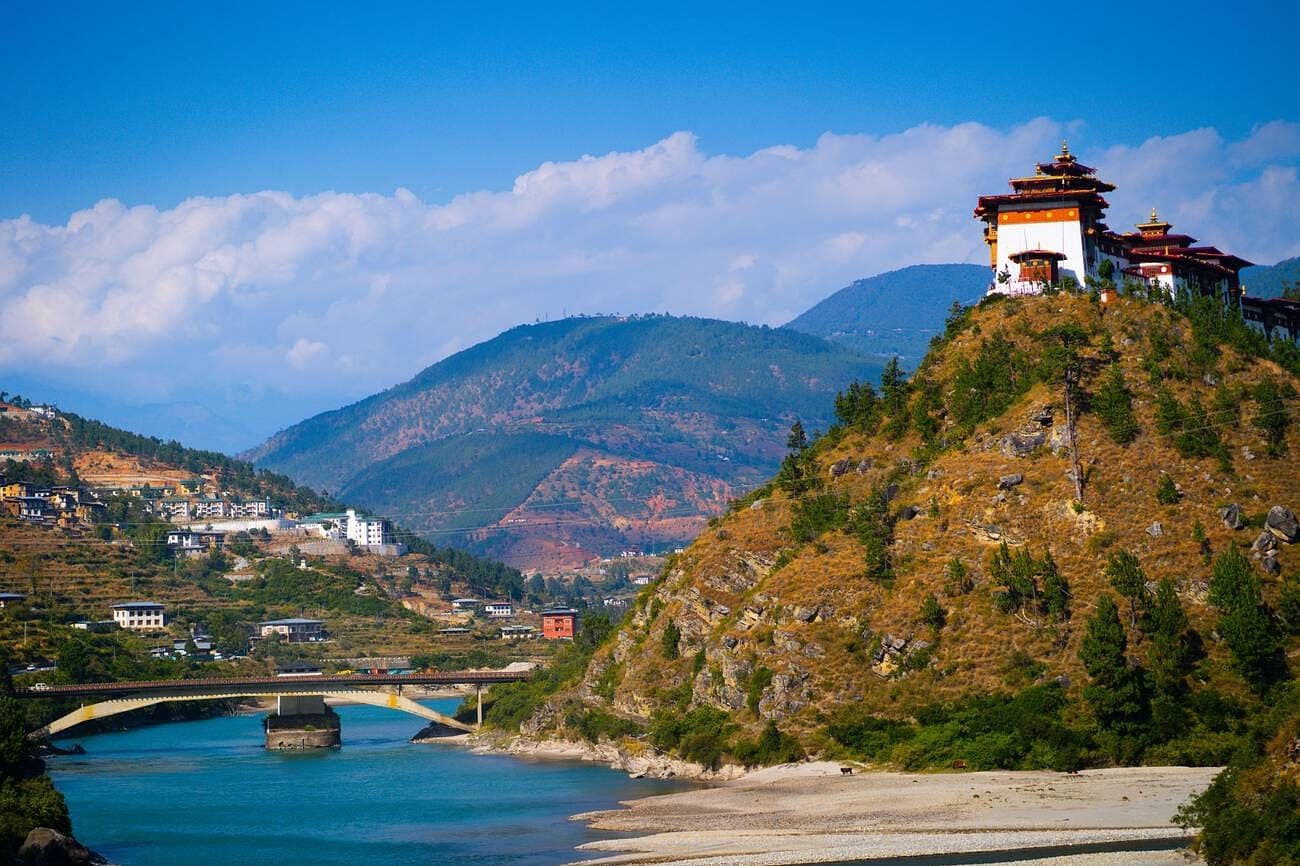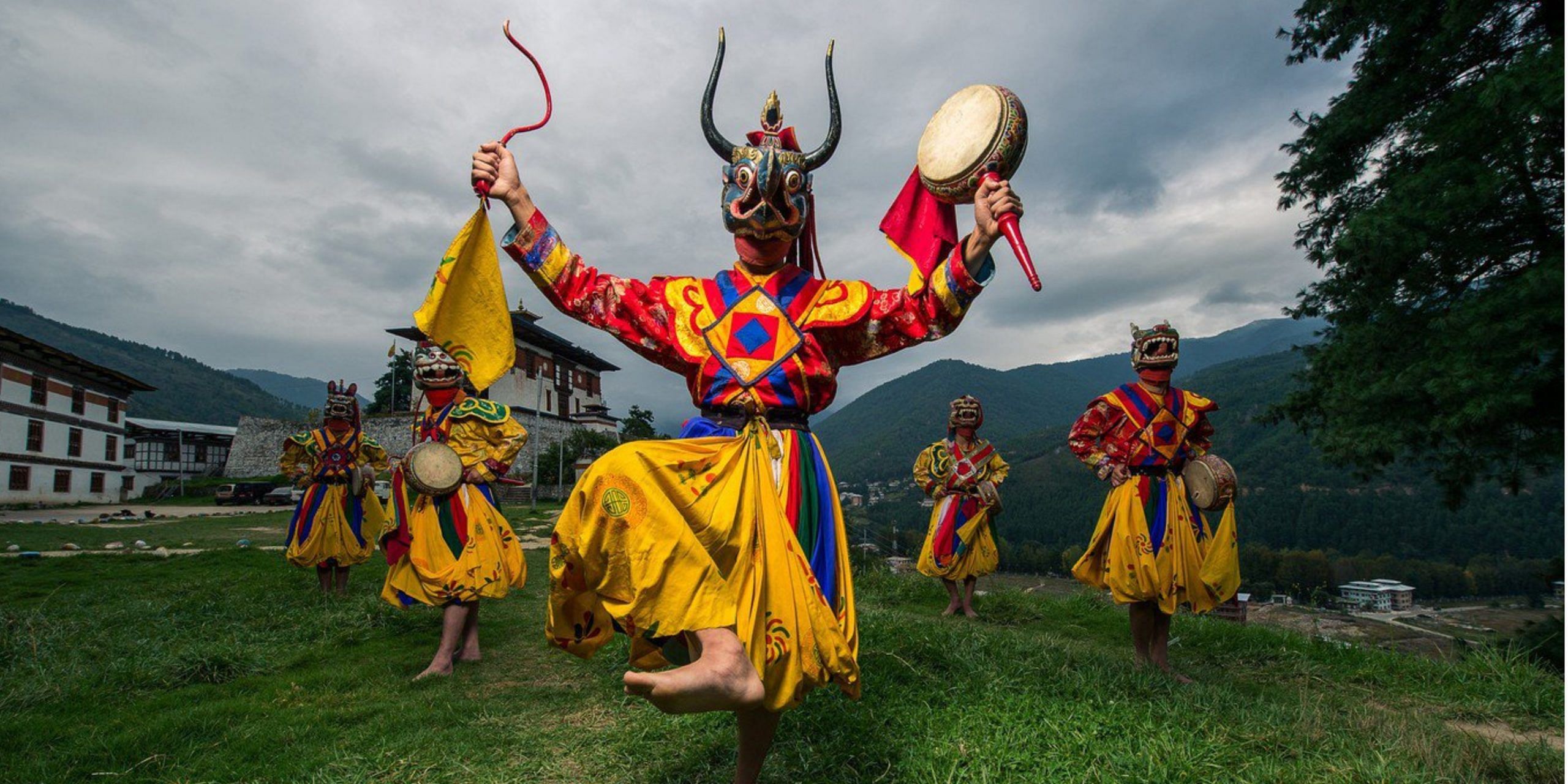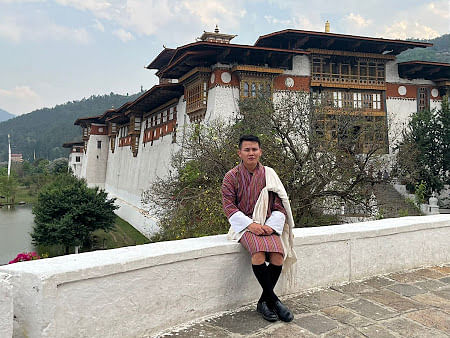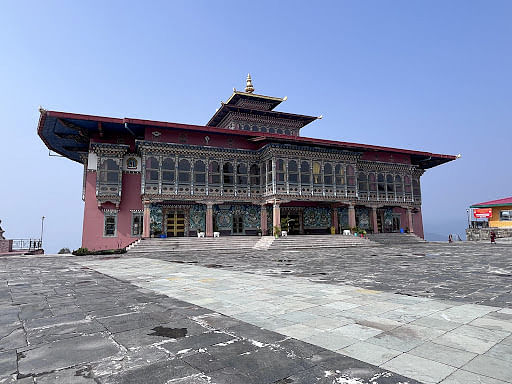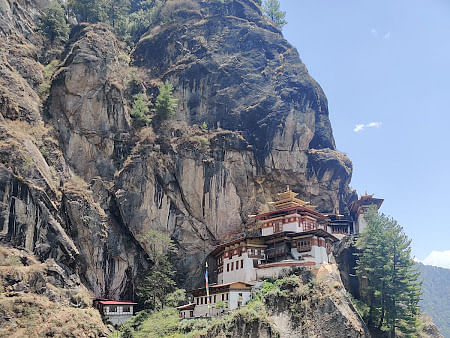What happens when two wild rivers crash together in the heart of Bhutan? You get Wangdue Phodrang - a place that smells like fresh bamboo and sounds like rushing water.
Most tourists speed right through this district, which is honestly their biggest mistake. The locals here are absolute bamboo wizards who can transform simple stalks into everything from delicate tea strainers to enormous storage containers. Their slate carving skills are equally mind-blowing - watch them turn boring grey rocks into intricate masterpieces.
The main dzong tells quite a dramatic story. Fire completely destroyed the original fortress, leaving the entire community heartbroken. But instead of giving up, everyone joined forces and rebuilt it even more spectacularly than before. Now it towers proudly on the hillside like it never left.
What makes Wangdue Phodrang in Bhutan so captivating isn't some fancy tourist trap - it's the beautiful mess of real life happening everywhere. Monks rushing to morning prayers, market vendors shouting over vegetable prices, kids chasing chickens down twisted lanes.
Searching for authentic places to visit in Bhutan? Stop looking. Our Bhutan tour packages always feature this gem because once you experience this raw, unfiltered slice of Himalayan culture, everything else feels fake.
Where Is Wangdue Phodrang Dzong Located?
If you're curious, where is Wangdue Phodrang Dzong located? It sits dramatically on a ridge where the Punatsang Chhu and Dang Chhu meet. From there, it commands sweeping views of the valley below - and reminds everyone why it was built there in the first place: beauty and strategy in one.
A Glimpse into Wangdue Phodrang History
Wangdue Phodrang history begins with its namesake – the fortress or dzong, located high above the valley. If you're wondering when was Wangdue Phodrang Dzong built? We have a clear date: it was constructed in 1638 by Zhabdrung Ngawang Namgyal, who aimed to create a strategic stronghold that also radiated spiritual energy.
Legend has it that while scouting the site, the Zhabdrung witnessed four ravens soaring in different directions- an auspicious sign representing the spread of Buddhism in the four directions. From that day, the fortress stood as a guardian, watching over river crossings and trade routes. Its importance grew so much that Wangdue served, at times, as Bhutan’s second capital.
Over the centuries, it faced disasters- burning down in 1837 and again, tragically, in June 2012 due to an electrical fire during renovation. But the people of Bhutan didn’t let it fade. A big reconstruction effort started in 2014, supported by the king, the government, and international donors. The restored dzong was finally reconsecrated in November 2022.
How to Reach Wangdue Phodrang
Thinking about how to reach Wangdue Phodrang? Let’s break it down in a way that’s easy to follow-from the international flight to local transfers.
1. By Air: The Starting Point
The most comfortable way to start your journey is by flying into Paro International Airport, Bhutan’s only international airport. From there, it’s a scenic 2 to 3-hour drive to Wangdue Phodrang, winding past Thimphu and Punakha. You can even stop briefly to see landmarks like Punakha Dzong or pause at viewpoints -if the weather cooperates, the Himalayan views are nothing short of spectacular.
Once you land, you can easily hire a taxi or take a pre-arranged car or bus to continue your journey.
2. By Road: From Nearby Cities or Across the Border
If you’re entering by land or coming from within the country:
- From Thimphu: It’s about 70 km or 2 to 3 hours by road. Buses run daily (e.g., Bumpa Transport at 8:30 AM and 2 PM), and taxis are available for a more private ride.
- From Phuentsholing (the main land entry from India): Buses and taxis cover about 224 km to Wangdue in 5–6 hours, via the scenic but winding Lateral Road. This main road cuts through passes like Dochu La and links several districts-including Wangdue Phodrang itself.
- From other Indian points: Travellers can take a train to stations like Hasimara or New Jalpaiguri, then cross into Bhutan at Phuentsholing, and continue overland to Wangdue Phodrang.
3. The Scenic Lateral Road
Bhutan’s main east-west highway-known as the Lateral Road-passes right through Wangdue Phodrang. This route spans the country, connects towns, and traverses high passes like Dochu La. It’s not just a road; it’s a journey through Bhutan’s geography, culture, and time.
Must-See Wangdue Phodrang Tourist Spots
Beyond the dzong, there are several Places to visit in Wangdue Phodrang that capture hearts:
1. Wangchuck Centennial National Park:
One of the largest protected areas in Bhutan spans parts of Wangdue Phodrang. It's home to alpine meadows, blue pine forests, and the headwaters of major rivers.
2. Phobjikha Valley
A glacial valley about 60 km away, it is serene and home to the endangered black-necked cranes each winter. Its meadows, hills, and traditional villages make it a favourite among nature lovers.
3. Gangtey (Gangteng) Monastery
Located above Phobjikha Valley, Gangtey monastery dates back to 1613. It is a spiritual hub surrounded by stunning views and deeply rooted Buddhist traditions.
4. Black-Necked Crane Information Centre
Located in Phobjikha, this centre educates visitors about the cranes’ migration and habitat. Telescopes offer respectful viewing, and there are exhibits about local conservation efforts.
5. Phobjikha Nature Trail (Gangtey Nature Trail)
A gentle 3 km trail winding through forests and meadows-it’s ideal for peaceful walks with beautiful scenic views, perfect for spotting birds and encountering local flora.
6. Adha Tsho
A sacred pilgrimage lake situated in Athang Gewog at around 1,300 m altitude, surrounded by forests and paddy fields. It is home to rare wildlife like the white-bellied heron and copper mahseer fish.
7. Rinchengang Village
Just a short uphill walk from Wangdue town, this historic village-called "the Grateful Village," is known for its traditional clustered homes, stone masonry heritage, and views of the dzong.
8. Gaselo, Nahee, Adha, and Rukha Villages
These rural gems offer authentic Bhutanese life-rice fields planted by hand, home hospitality, and a slower pace that reflects true community living. Especially mesmerising during harvest season, they capture the essence of local culture and Gross National Happiness
Things to Do in Wangdue Phodrang
When you visit Wangdue Phodrang, it isn’t just the scenery that captivates-it’s the experiences waiting to unfold. Here’s a curated list of engaging activities to help you make the most of your time there:
1. Explore the Weekend Market by the River
One of the most vibrant things to do in Wangdue Phodrang is visiting the weekend market near the Punatsang Chhu River. Here, you’ll find homegrown Bhutanese produce-native rice, organic vegetables, spices, river weeds, and local sausages. It's a perfect slice of local life, where we can chat with vendors, taste fresh treats, and feel the pulse of rural commerce.
2. Attend the Wangdue Phodrang Dzong Festival (Tsechu)
If your visit aligns with the festival calendar, attending the Wangdue Phodrang dzong festival (Tsechu) is unforgettable. This three-day event unfolds on the Tencholing Army grounds while the dzong is being rebuilt. You’ll see colourful mask dances, symbolic rituals, and dramatic performances that bring medieval legends to life.
3. Trek Scenic Trails in Phobjikha Valley
Want a mix of nature and culture? A walk along the Phobjikha Nature Trail (or Gangtey Nature Trail) is one of the deeply moving things to do in Wangdue Phodrang. Over roughly three kilometres, the route takes us through pine forests, wetlands, prayer flags, and breathtaking valley views-perfect for a tranquil and immersive hike.
4. Join Black-Necked Crane Conservation Activities
During winter, the glacial Phobjikha Valley becomes a haven for black-necked cranes. At the Black-Necked Crane Information Centre, we can learn about their migratory patterns, conservation efforts, and view them safely via telescopes. It’s a meaningful interaction between wildlife and local stewardship.
5. Visit Gangtey Monastery (Gangtey Goempa)
Located above the valley, Gangtey Monastery, established in 1613, is a major spiritual site. It offers a peaceful retreat into Buddhist tradition, with sweeping views of the valley floor. If you’re visiting during festival season, you might catch Tshechu dances here too.
6. Wander Through Heritage Villages
Exploring villages like Rinchengang, Gaselo, Nahee, Adha, and Rukha offers a glimpse into daily life in rural Bhutan. Rinchengang is notable for its stone-masonry heritage and clustered traditional homes-almost museum-like, but lived-in. In Adha and Rukha, organic farming and warm hospitality are the norm. These experiences are some of the most authentic things to do in Wangdue Phodrang.
7. Visit Sacred Temples Like Sha Radap and Dargay Goempa
Right near town, Sha Radap Temple (Rada Lhakhang) is dedicated to the guardian goddess of the area. Locals bring newborns for blessings and play a tradition of rolling dice to receive divine wishes-a beautifully intimate ritual. Similarly, Dargay Goempa is a serene monastery on a hilltop offering peace, painted frescoes, and panoramic views.
8. Spot Wildlife in Protected Areas
Nearby Jigme Dorji National Park and Wangchuck Centennial National Park shelter diverse wildlife-snow leopards, takin, red pandas, and over 300 bird species. Though not always easy to access, they’re perfect for those looking for adventure and natural immersion.
Hotels in Wangdue Phodrang Bhutan - Where to Stay
Finding the right place to stay can shape your experience in Wangdue Phodrang-whether you crave nature, culture, comfort, or simplicity. Here are some standout accommodations that locals and travellers often recommend:
1. Punatsangchhu Cottages
This charming retreat is just a short drive (around 5 km) from town, nestled alongside the Thimphu–Wangdue highway and overlooking the Punakha River. Designed for both quiet travellers and professionals, it features a business centre, conference space, library, and Wi-Fi (available in the lobby). Room options include 11 standard twin rooms (approx. 2,500 INR/night) and 16 deluxe cottages (around 3,500 INR/night), with calming views from private balconies.
2. Dragon’s Nest Resort
Located opposite Bajo town, this resort offers sweeping views over the Punakha Chu and a relaxed garden ambience. The staff is known for their warm hospitality, though summers can bring pesky insects, and service may be slow during busy periods. Standard rooms run about 3,000 INR/night, while deluxe rooms are around 4,500 INR/night.
3. Kichu Resort Wangdue
A peaceful retreat situated roughly 9 km east of town, nestled above the Dang Chu river. Guests love the river-facing balconies-bring insect repellent during the summer months. Offers include 24 standard rooms (approx. 3,700 INR/night) and a luxury suite (around 8,000 INR/night). The resort serves primarily vegetarian fare in honour of the owner’s family’s spiritual recognition.
4. Hotel Pema Karpo
The largest hotel centrally located in town, it offers 35 rooms: 27 standard (approx. 2,500 INR/night), 6 deluxe (3,500 INR/night), and 2 spacious luxury suites (around 6,000 INR/night)-complete with bathtubs and separate sitting areas. The best views face the local archery ground. Plus, it's the only hotel in the area with a swimming pool.
5. Wangdue Eco Lodge
An eco-conscious boutique-style lodge, located in Rubessa, it blends traditional Bhutanese architecture with sustainability. Its eight suites feature local materials and garden-fresh meals. Rooms are around 3,999 INR/night, with extras like cooking classes, cheese-making workshops, archery, and guided hikes to nearby temples or villages. On clear days, you can see the Dzong and mountain peaks from the large balcony.
Restaurants in Wangdue Phodrang - Savoury Moments
In Wangdue Phodrang, dining out offers more than a meal-it’s a window into Bhutan’s warm, simple flavours and village life.
- Wangdue Eco Cafe - Located about 10 km from town, this charming cafe and bar offers select meals such as a masala omelette and excellent black coffee. Its real draw? Sweeping mountain views and a cosy, art-filled ambience.
- KuenPhen Restaurant - Along the road to Pele La pass, this small eatery serves Bhutanese and continental options. The highlight is the seating amidst beautiful views-perfect for stretching your legs during an outing. Vegetarian options and yak butter tea are available.
- Khandu Hotel’s Restaurant - Also en route to Pele La, it delivers traditional dishes like Maroos (stews), cheese-based Datsi dishes, and momos. It even includes a larger VIP room used occasionally for official meals.
- Memories Cafe - A family-friendly spot offering American, pizza, and sushi dishes, not common in many Bhutanese towns. It stands out for serving freshly brewed coffee and offering a clean, welcoming atmosphere.
Digging into restaurants in Wangdue Phodrang is more than eating-it's about slow moments, local flavours, and delightful surprises.
Nightlife in Wangdue Phodrang - Evening Calm
If you're looking for a buzzing nightlife scene, you’ll find Nightlife in Wangdue Phodrang refreshingly different-it’s quiet, cultural, and reflective, rather than flashy or fast-paced.
1. A Calm Cultural Eveningscape
Unlike towns with neon lights and live bands, nightlife in Wangdue Phodrang gravitates toward local, communal warmth. Many restaurants and small bars stay open into the evening, inviting visitors and locals alike to wind down with warm plates, butter tea, or ara (a traditional rice wine) as they gather and chat. This gentle social energy isn’t noisy-it’s real and soothing.
2. Cultural Performances & Festival Nights
If we happen to visit during festival season, nights can come alive with cultural performances, dances, traditional music, and even storytelling under the stars. While these aren’t nightly events, they’re unforgettable moments when festival lights flicker in the evening and history dances in the air.
3. Evening Walks & Town Strolls
One of the simplest yet most charming forms of nightlife in Wangdue Phodrang is a slow walk through the town at dusk. Stroll past softly lit buildings, gently murmuring streams, and pop into small shops or cafés. It’s an easy way to connect with the town’s peaceful rhythm-no rush, just presence.
4. A Note on Clubs & Bars
Official nightlife hubs are limited, but there is one club that exists: Zomyang Club. Advertised as an energetic venue with music, drinks, and dancing, it offers nightlife visibility in town. However, local travel resources are sparse, and even some tourist guides suggest nightlife is minimal. So if you're curious, looking it out might be an adventurous detour-but don’t count on it being the norm.
Wangdue Phodrang isn’t a place to rush through -it’s a place to enter slowly and let it whisper its stories to you.
Whether you ask when Wangdue Phodrang Dzong was built, visit the Wangdue Phodrang tourist spots, try out local restaurants in Wangdue Phodrang, or relax into the nightlife in Wangdue Phodrang, every moment here is filled with gentle wonder.
And let's not forget-you've got cosy hotels in Wangdue Phodrang Bhutan to rest in, real communities to meet, and history that’s vivid beneath your feet. So plan your visit, embrace the peace, and let Wangdue Phodrang in Bhutan fill your senses and your heart.




